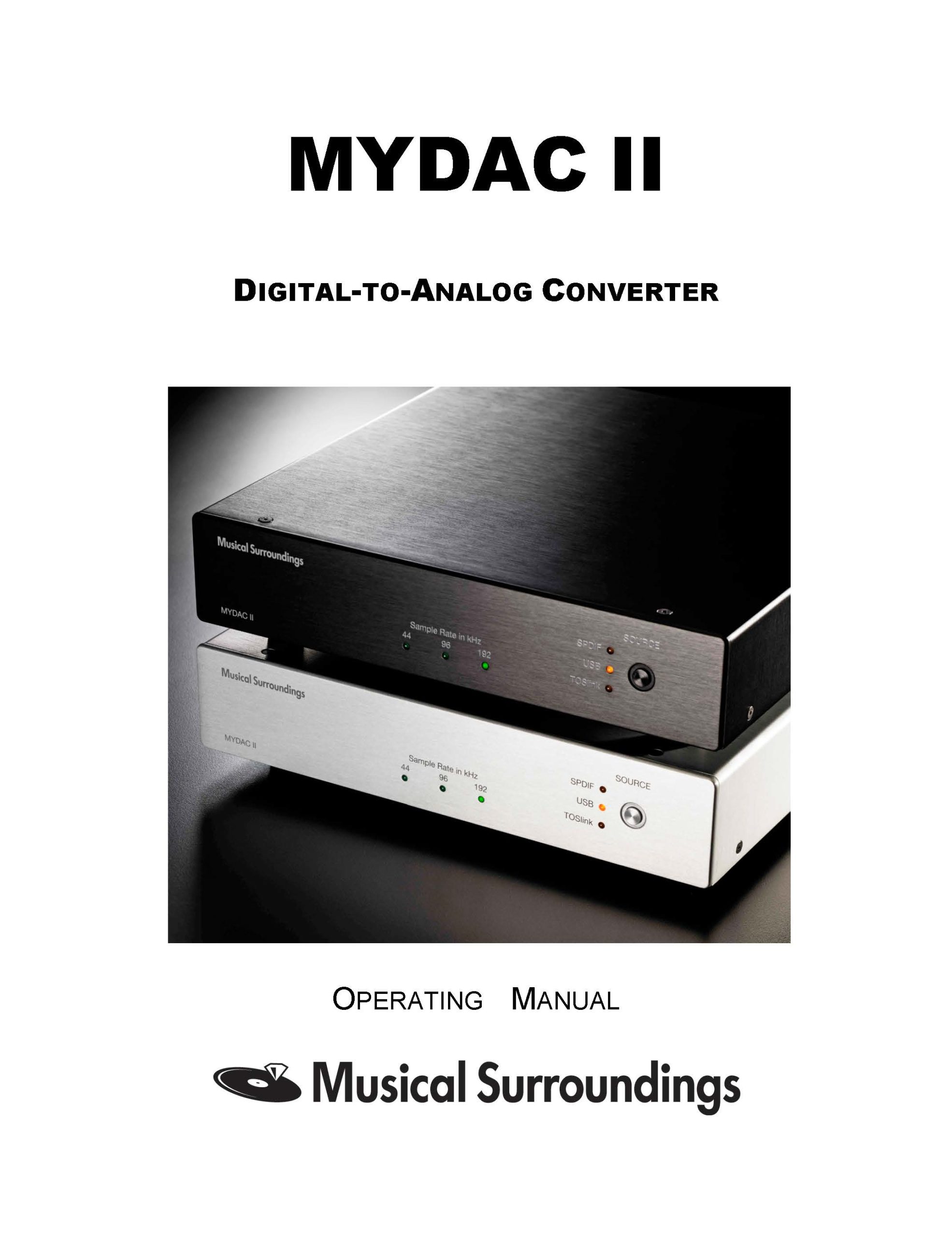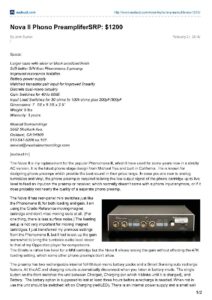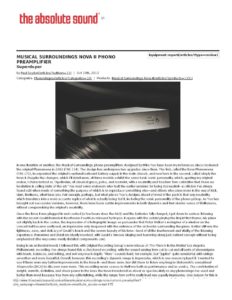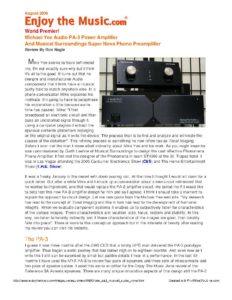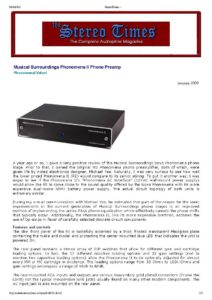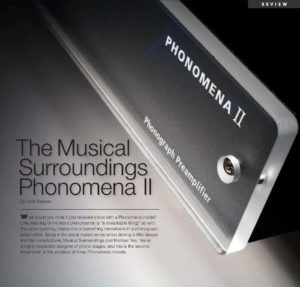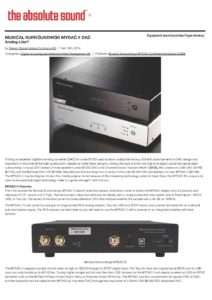Musical Surroundings MyDAC II D/A Converter
“It could be the DAC that makes it possible for you to enjoy digital for the first time.” – The Absolute Sound, Editors’ Choice Award
Class-Leading Low-Level, Textural, and Spatial Information Recovery: Musical Surroundings MYDAC II Uses Patent-Pending MODR Technology, Results in Incredible Sound with CDs and Compressed Files
Utilizing patent-pending technology developed by designer Michael Yee, the Musical Surroundings MYDAC II recovers unprecedented amounts of low-level, textural, and spatial information in digital files for a DAC in its price class. An audiophile-vetted Texas Instruments PCM1798 chipset complements a 24-bit/192kHz S/PDIF input, 96kHz Toslink input, and 16-bit/48kHz USB input. The 3.4-pound MYDAC II works absolute wonders with CDs and compressed files, and capably serves in the computer-audio field. Once you hear it, you’ll instantly know why it’s a repeat winner of The Absolute Sound’s Editors’ Choice Award.
Drawing from advancements he made with his signature phono preamplifiers, Yee created the software-driven Musically Optimized Digital Reconstruction (MODR) – a technique that alters only the sub-quantization changes in the original signal. Its executed within an FPGA that effectively mutes jitter and takes the signal as it enters the DAC. FPGA provides a proprietary pre-emphasis conditioning of the signal before the DAC chip to remove the DAC’s effect on quantization error. After the DAC chip, an analog stage provides de-emphasis prior to output. MODR is then employed.
As Yee explained to The Absolute Sound: “In a system with 16-bit ADCs and 16-bit DACs (CD audio), both ADCs and DACs have roughly the same contribution to quantization error. It is the high frequencies that need more resolution in a sixteen-bit system. If one were to emphasize the high frequencies in the digital domain (making the high frequencies represented by much bigger numbers), pass them through the DAC at a much higher resolution, then EQ them back down in the analog domain to make the system flat, the contribution to quantization error due to the DAC would be essentially zero.
“Our digital EQ is something akin to RIAA on LPs, though it starts at 40Hz and ends at 4kHz, rising at 6dB/octave. The boost at 4kHz is 40dB, where the curve ends. The analog de-emphasis looks very much like a phono preamp doing the exact complement to the digital EQ. The digital EQ is implemented in FPGA (Field Programmable Gate Arrays) in order to be an exact complement to the analog de-emphasis. This means that the higher frequency range is represented by numbers 100 times bigger when going through the DAC and the DAC appears to be 100 times more accurate.”
Specification
| Frequency Response | 20 Hz – 20 KHz |
| Inputs | S/PDIF: up to 24bit/192KHz Toslink: up to 24bit/96KHz USB: up to 16bit/48KHz |
| Output Voltage | 4 volts |
| Distortion | .02% |
| Output Impedance | 100 Ohms |
| Dimensions | 9 7/8″ W x 9 7/8″ D x 2″ H |
| Weight | 3.4 pounds |

